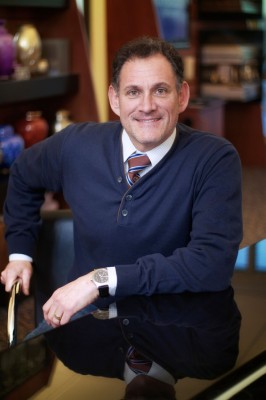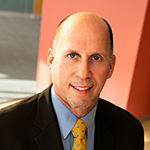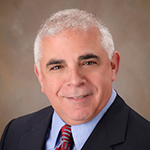
Unsurprisingly, death is not an easy sell. Most of us secretly hope the day of demise will never come. But it always does. And what happens next is a business transaction—or more likely, a series of business transactions. Someone must remove the body from where it died, prepare it, dress it, and dispose of it. Most of the time a ceremony of some kind is held, in a particular venue, with transportation and perhaps food and someone coordinating the event.
But with the loosening of traditional community and family structures, increasing life expectancy, growing numbers of Americans with no religious affiliation, and other factors, the death-care industry is facing both new challenges and opportunities.
The biggest factor on the horizon is the aging generation of baby boomers. Born in 1946 through 1964 in the greatest numbers our country had ever seen, they will die in vast numbers, too. How they will plan for their final resting place represents a gigantic opportunity for funeral professionals.
Dean Lambert is the vice president of marketing at Homesteaders Life Company, a Des Moines, Iowa-based firm founded in 1906 that sells prearranged funerals insurance exclusively through privately owned funeral homes. Lambert is a boomer himself, and he’s all ready to go. “My funeral is already planned and paid for,” he says easily. (There’s even a folder ready on his computer titled “Funeral Photos,” so neither his wife nor his children have to undergo grief-filled hours of sorting through photographs.)
Homesteaders and its competitors offer something that revolutionized death care when first developed in the 1990s: prearranged funeral-service funding. Rather than passing funeral costs and plans to surviving family members or purchasing life insurance with a flat and potentially insufficient payout, this pre-need funeral product was designed to grow over time and help offset inflation of the funeral cost. “Many funeral homes participate in this promise that if you plan with us today, we can guarantee the cost of the funeral so that your family doesn’t have to worry about anything when the time comes,” Lambert says.
The product is also a boon for funeral professionals at a time when demand for traditional services is slowing, while direct cremation is on the rise. The pre-need funding market is estimated at $4 billion, with half being funded by insurance and the other half through banks and other types of trusts. Individuals who purchase are, according to Homesteaders’ policy-owner research, less likely to choose the direct cremation option than the national average.
Despite tremendous potential, the funeral landscape is increasingly competitive. Consumers are opting for less traditional options; large, publically held corporations like Service Corporation International loom over a fragmented network of privately owned funeral homes; and regulation from the Federal Trade Commission’s Funeral Rule can make it difficult to navigate the industry. Funeral professionals, who didn’t need a sales pitch in traditional communities a half-century ago, must now find a way to differentiate themselves and communicate value in this market.
To that end, Homesteaders offers a trove of resources for its funeral homes, based on extensive in-house market research and focus groups that help understand how we tick when it comes to death. “The funeral industry is on the precipice of its greatest opportunity, in terms of the sheer number of people who should be thinking about planning funerals,” Lambert says. “Yet we’re at a crossroads where people have access to so much information on the Internet, and they’re hearing so many different things—from what HBO tells them to do with their remains to what blogs tell them to do. So who is better than an experienced funeral professional, who is creative and understands what people go through when they think of end of life, to tell them everything that is possible for them in funeral service today?”
One major effort is encouraging funeral homes to be part of a community’s life—not just its deaths. From hosting senior movie nights to creating scholarship funds for high school students, the more active funeral homes can be in building long-term relationships, the faster friends and families will think of them when a loved one passes away.
Addressing the impasse at which baby boomers, a “sandwich generation” between under-earning kids and aging parents, stand today is also important. While considering retirement and their own mortality, boomers are also participating heavily in their parents’ end-of-life issues. “We even have a program called ‘How To Talk To Your Parents About Their Money and Final Wishes,’” Lambert says. “It’s hard to have that conversation, but it needs to be done. That generation is more traditional, and there were things you just didn’t talk about. But you need to know where their important documents are, and what they feel and want in terms of services and disposition when they die.”
Sigmund Freud wrote in his Reflections on War and Death in 1918, “We cannot, indeed, imagine our own death.” And “as far as the death of another person is concerned, every man of culture will studiously avoid mentioning this possibility in the presence of the person in question.” But maybe optimism about death actually comes when we accept it, rather than pretend it will never come. In focus groups, Lambert notices the subjects who don’t consider pre-need funeral planning sketch dark scenes that represent death: gravestones, blank faces with X’s for eyes, clouds, rain. But those who are planning ahead? “They drew pictures of sunshine, hand-holding, and smiles,” Lambert says. That’s a pretty good sign for this industry.

